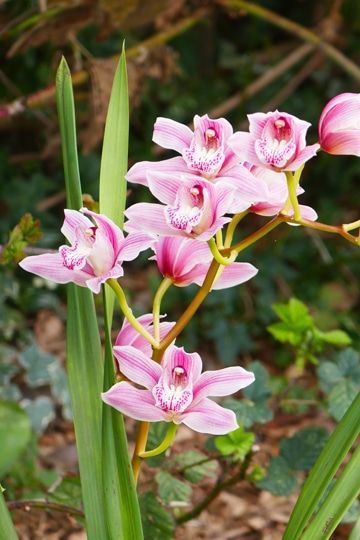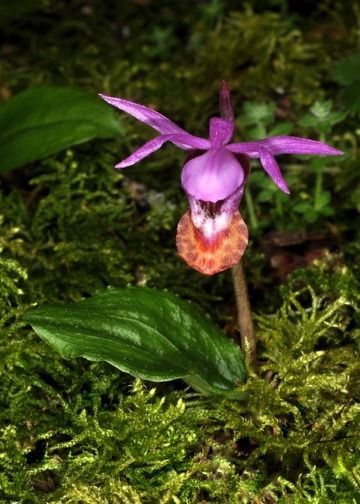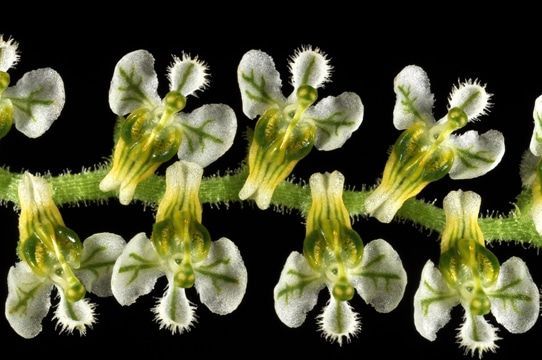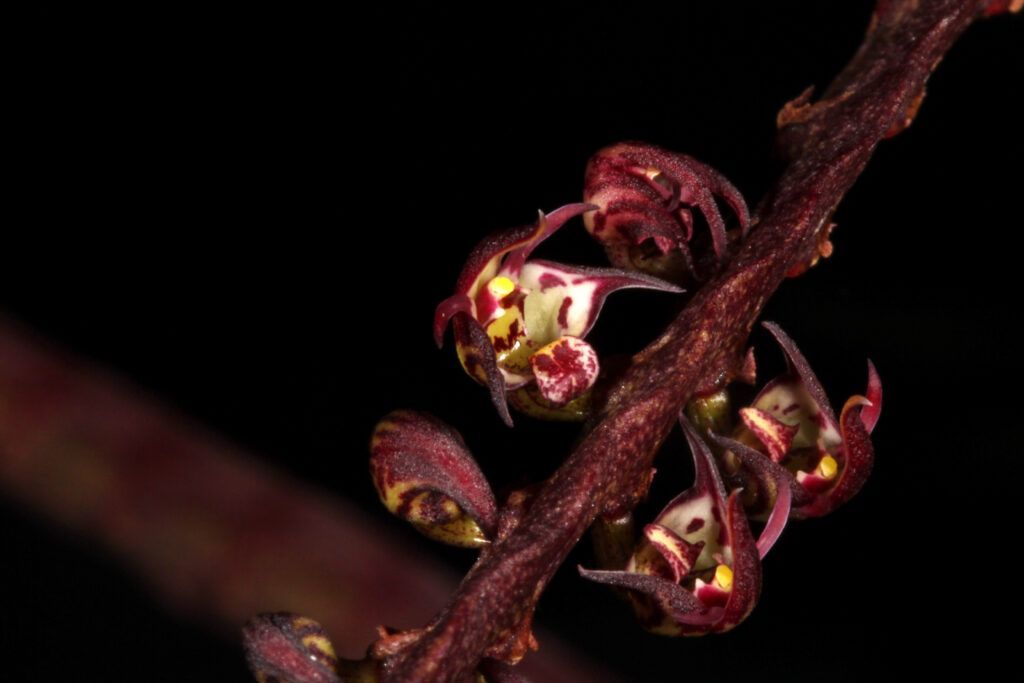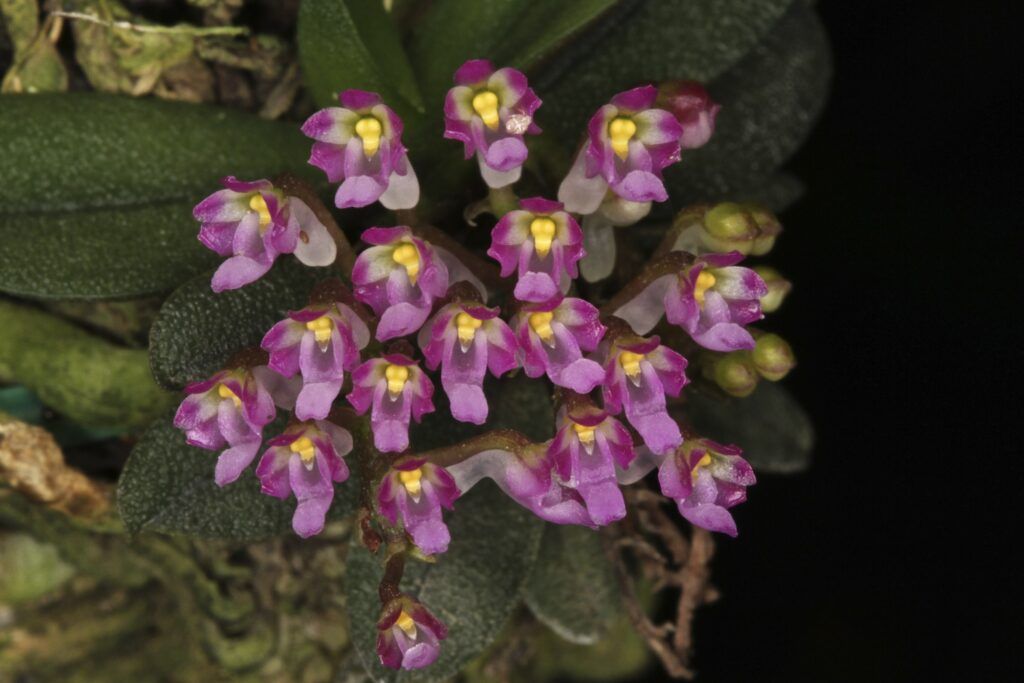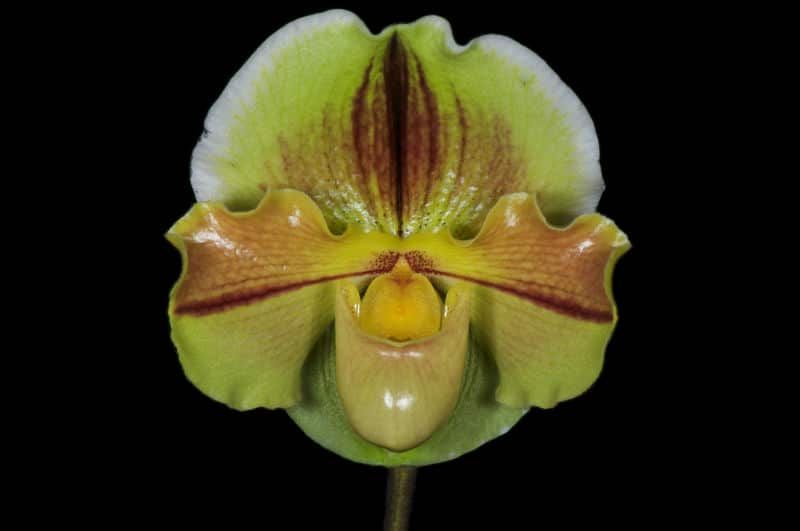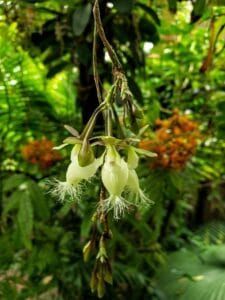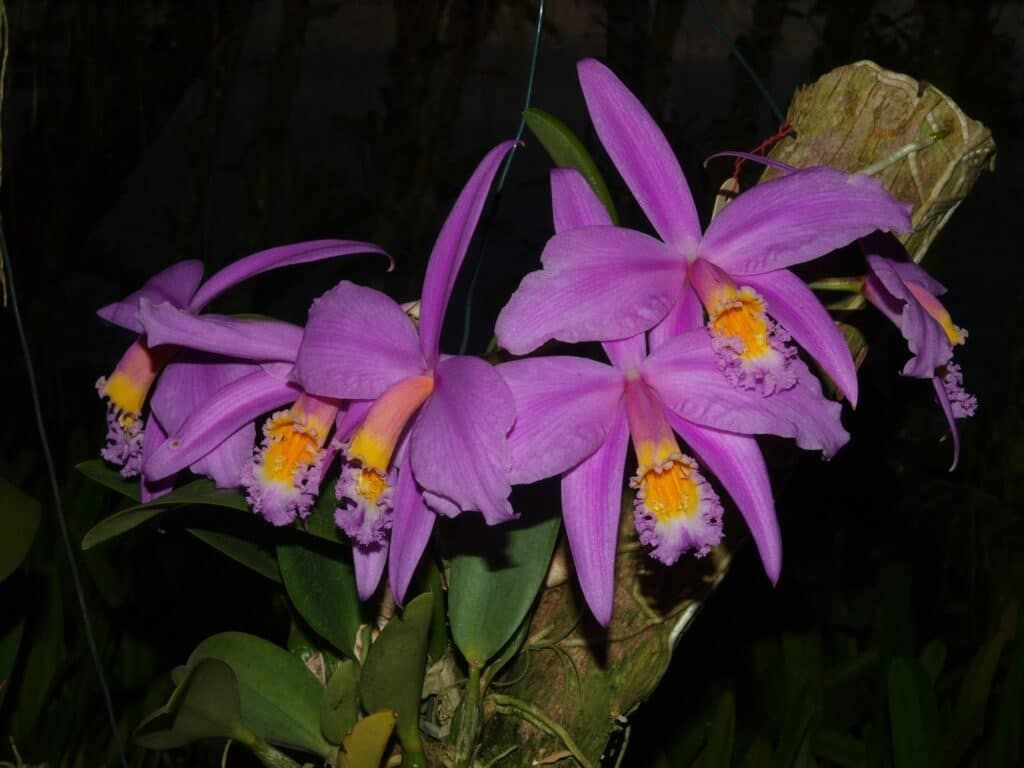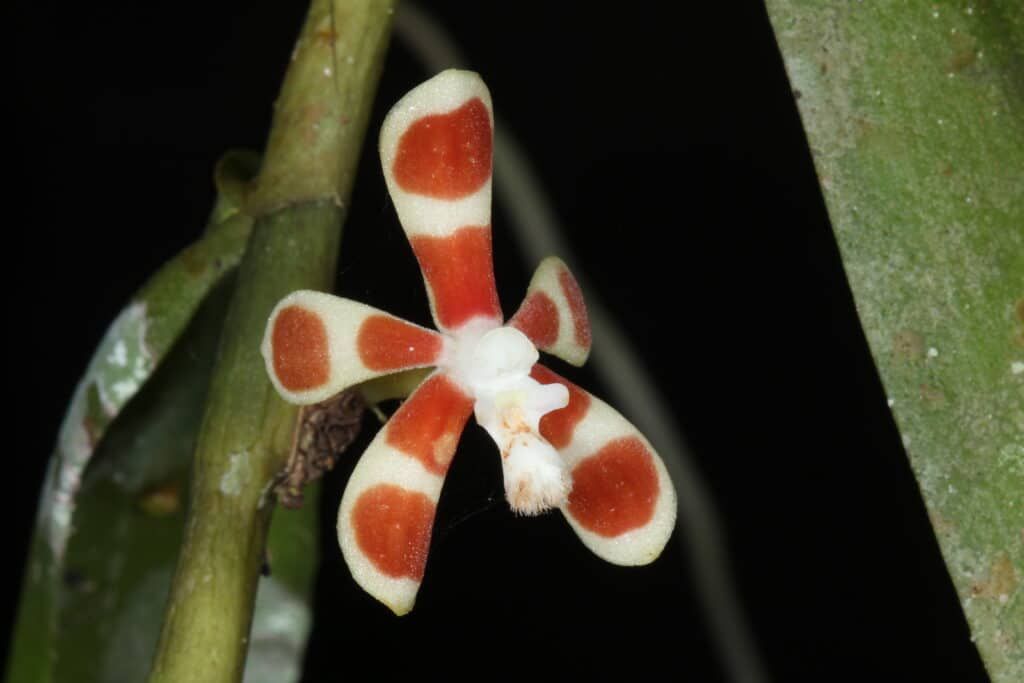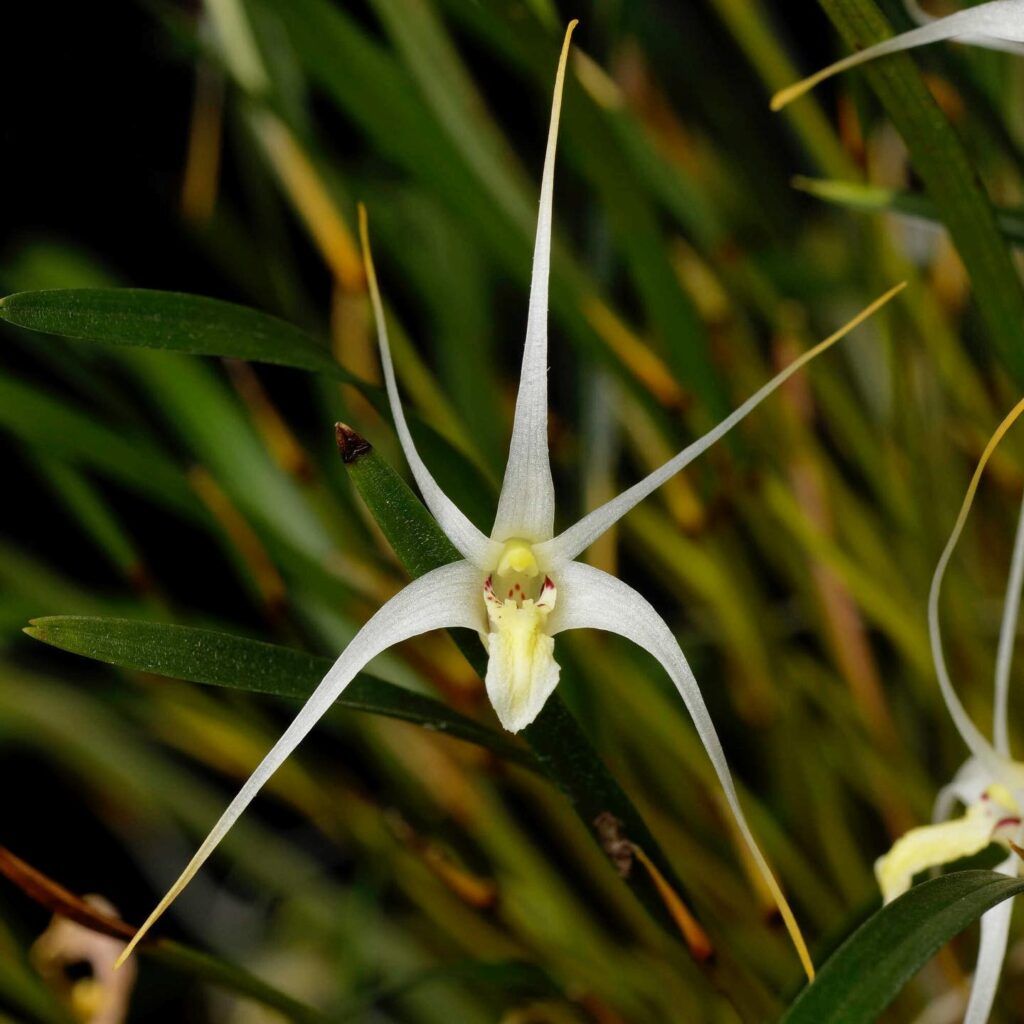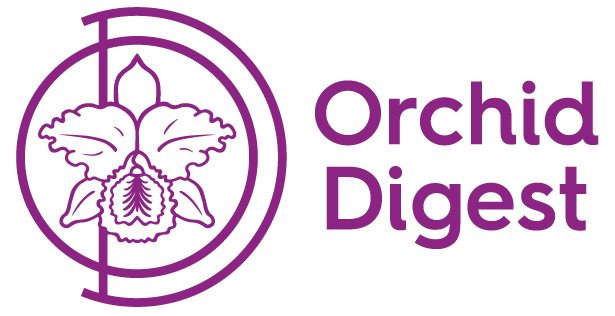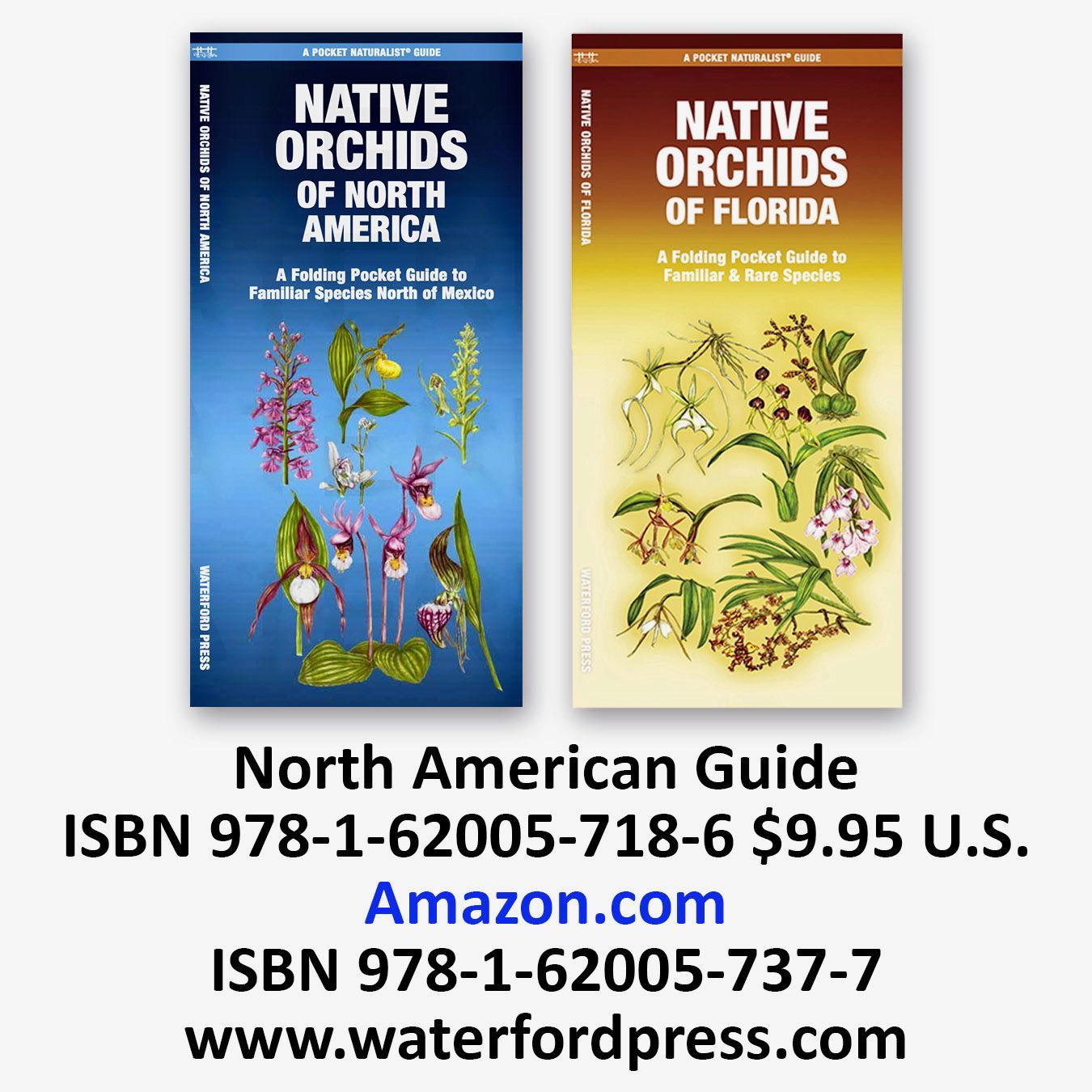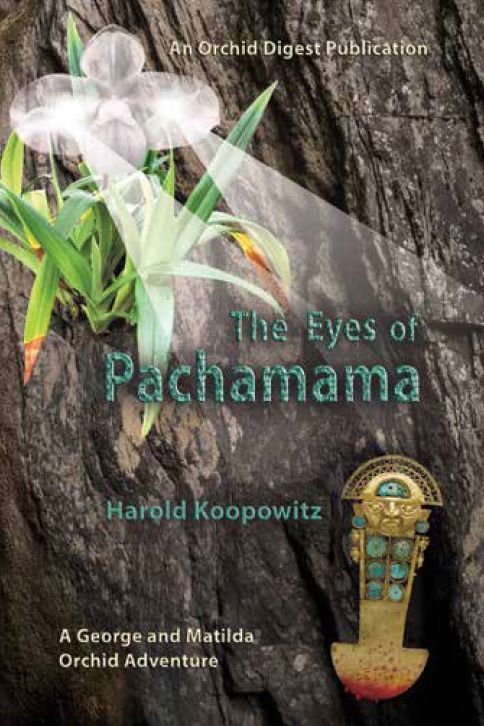Cymbidium goeringii
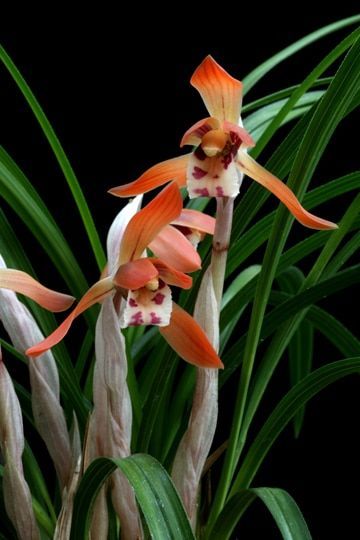
Cymbidium goeringii
Photographer ©Johan Hermans
The Orchid Digest Back Cover 85-4
Cymbidium goeringii (Rchb.f.) Rchb.f. in W.G.Walpers, Ann. Bot. Syst. 3: 547 (1852)
Cymbidium goeringii is native to Bhutan, China, India, Japan, Korea, and Taiwan. Confucius was the first to document this species in writing. The flowers, held low amid the leaves, are scented—the plants flower in February or March.
Cymbidium goeringii likes warm, bright, and moist conditions in the summer. They take cool temperatures, lower light, and drier conditions in winter. The traditional way to grow them is in bonsai mixes in tall, plastic cymbidium pots. However, they will grow in various media, including pine bark and coconut husks. The buds form in the late summer or early fall when the temperature is below 50oF and above freezing. Most buds will abort if the temperatures are too warm when they are spiking.
Please see the article by Ken Jacobsen in the 85-4 issue, Cymbidium Goeringii—a Tale of Two Orchids, for lots of interesting information on this wonderful orchid.
Homotypic Names:
* Basionym/Replaced Synonym
Heterotypic Synonyms:
- Cymbidium virescens Lindl., Edwards’s Bot. Reg. 24(Misc.): 37 (1838), nom. illeg.
- Cymbidium virens Rchb.f. in W.G.Walpers, Ann. Bot. Syst. 6: 626 (1863).
- Cymbidium mackinnonii Duthie, J. Asiat. Soc. Bengal, Pt. 2, Nat. Hist. 71: 40 (1902).
- Cymbidium forrestii Rolfe, Notes Roy. Bot. Gard. Edinburgh 8: 23 (1913).
- Cymbidium yunnanense Schltr., Repert. Spec. Nov. Regni Veg. Beih. 4: 74 (1919).
- Cymbidium pseudovirens Schltr., Repert. Spec. Nov. Regni Veg. Beih. 12: 351 (1922).
- Cymbidium tentyozanense Masam., Trans. Nat. Hist. Soc. Formosa 25: 14 (1935).
- Cymbidium uniflorum T.C.Yen, Icon. Cymbid. Amoy.: A2 (1964).
- Cymbidium goeringii var. mackinnonii (Duthie) A.N.Rao, J. Econ. Taxon. Bot. 24: 214 (2000).
References:
Orchid Web presented by Orchids Limited. https://www.orchidweb.com/orchids/cymbidium/species/cymbidium-goeringii-daifuuki
Phal, Jay. Internet Orchid Species Encyclopedia (IOSPE). Internet Orchid Species Photo Encyclopedia: http://www.orchidspecies.com/ornitkrugeeri.htm
World Checklist of Selected Plant Families: https://wcsp.science.kew.org/prepareChecklist.do?checklist=selected_families%40%40028280120221944474
The post Cymbidium goeringii appeared first on Orchid Digest.
